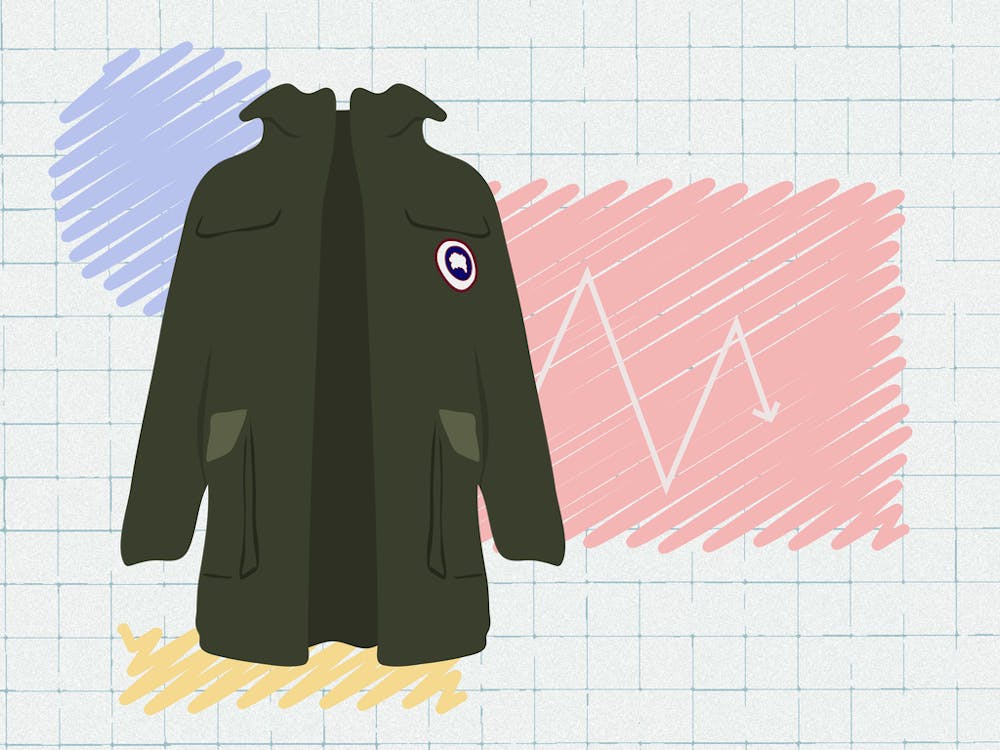You’ve seen them before on campus. Those absurdly expensive parkas adorned with a red, white, and blue logo that proudly displays two words: Canada Goose. Valued at around $995, these jackets are an all–too–obvious indicator of wealth. But how did this jacket, warm enough for journeys to the Arctic, become a status symbol?
Founded in 1957 as Metro Sportswear Ltd., Canada Goose originally started out as a humble company that specialized in woolen vests, raincoats, and snowmobile suits. After the invention of a volume–based down filling machine, Metro Sportswear created a new label called Snow Goose—a precursor to the company's current name. In 1982, Laurie Skreslet became the first Canadian to summit Mount Everest, all while wearing a custom parka designed by Metro Sportswear, paving the way for what would soon become Canada Goose’s rise to success.
Although Canada Goose coats are known for their durability, warmth, and quality, the protection they offer from extreme cold isn't exactly necessary in places like Philadelphia and New York City. Because of that, the reason behind Canada Goose’s allure here is clear: branding and clout.
One of the reasons behind Canada Goose’s reputation as a status symbol could be its association with film crews and the high–brow film community. After serving as the “unofficial jacket” of film crews in cold settings, Canada Goose quickly aligned itself with the Hollywood elite by partnering with the Sundance Film Festival in 2013. In the same year, supermodel Kate Upton wore a Canada Goose jacket on the cover of Sports Illustrated, highlighting the company's association with stardom.
Besides the brightly contrasting logo, everything about Canada Goose jackets is seemingly lowkey—from the coats' muted coloring to their practical styles. This gives the brand an air of functionality and quality while also drawing the eye to its infamous logo.
Because these clever branding tactics made consumers associate Canada Goose with the rich and famous, wealthy college students began to consider these parkas a winter necessity. The exorbitant cost was justified by the jackets' so–called practicality—after all, it makes sense to splurge on a high–quality basic, right?
But not everyone agrees with that sentiment. What’s the point of buying an expensive coat for "practical" reasons when temperatures hardly ever drop below 20 degrees Fahrenheit—if not to flex on your peers? Critics see Canada Goose jackets and luxury Supreme hoodies in a similar light: as a gaudy means to flaunt your wealth.
Despite Supreme being considered a “flashier” brand than Canada Goose, both serve the same purpose: to sell incredibly expensive clothes with a recognizable logo that provides for an air of exclusivity. Just like Supreme, the ubiquitous yet exclusive nature of Canada Goose has made it a prime target for counterfeits and knockoffs. Not only this, but Canada Goose wearers have also increasingly become targets of theft—again highlighting the equation of these jackets with wealth.
Bearing this in mind, we have to ask ourselves a question: Why do we place so much emphasis on looking rich in the name of practicality? Why do we idolize a jacket just for its logo? The value of owning a Canada Goose coat comes not from its functionality but the social clout we perceive that it offers. In our society, we've come to define ourselves in relation to others based on our consumption; our obsession with Canada Goose jackets is a prime example.







